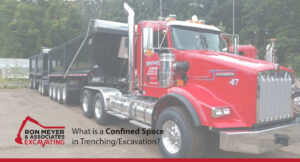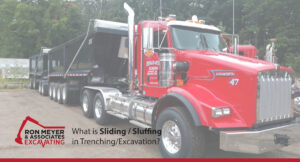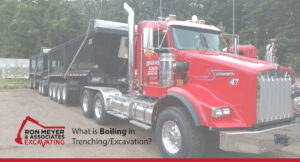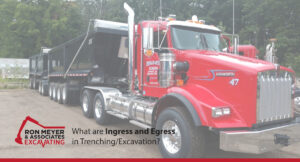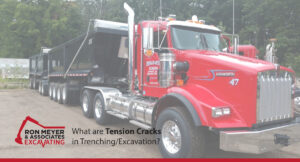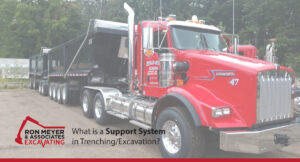Confined Space is a space that, by design and/or configuration, has limited openings for entry and exit, unfavorable natural ventilation, may contain or produce hazardous substances, and is not intended for continuous employee occupancy. For additional information, see OSHA Technical Manual (OTM) Section V: II. Definitions. At Ron Meyer & Associates Excavating, we’ve been providing underground […]
What is Sliding / Sluffing in Trenching/Excavation?
Sliding or sluffing may occur as a result of tension cracks. Tension cracks usually form at a horizontal distance of 0.5 to 0.75 times the depth of the trench, measured from the top of the vertical face of the trench. For a visual, see Figure V:2-1. Tension Crack. For additional information, see OSHA Technical Manual (OTM) […]
What is Boiling in Trenching/Excavation?
Boiling is evidenced by an upward water flow into the bottom of the cut. A high water table is one of the causes of boiling. Boiling produces a “quick” condition in the bottom of the excavation or trench, and can occur even when shoring or trench boxes are used. For additional information, see OSHA Technical Manual […]
What are Ingress and Egress in Trenching/Excavation?
Ingress and Egress mean “entry” and “exit,” respectively. In trenching and excavation operations, they refer to the provision of safe means for employees to enter or exit an excavation or trench. For additional information, see OSHA Technical Manual (OTM) Section V: III. Overview: Soil Mechanics. At Ron Meyer & Associates Excavating, we’ve been providing underground and […]
What are Tension Cracks in Trenching/Excavation?
Tension cracks usually form at a horizontal distance of 0.5 to 0.75 times the depth of the trench, measured from the top of the vertical face of the trench. For a visual, see Figure V:2-1. Tension Crack. For additional information, see OSHA Technical Manual (OTM) Section V: III. Overview: Soil Mechanics. At Ron Meyer & Associates […]
What is a Support System in Trenching/Excavation?
Support System refers to structures such as underpinning, bracing, and shoring that provide support to an adjacent structure or underground installation or to the sides of an excavation or trench. For additional information, see OSHA Technical Manual (OTM) Section V: Chapter 2 (Definitions). At Ron Meyer & Associates Excavating, we’ve been providing underground and commercial construction to […]
- 1
- 2
- 3
- …
- 19
- Next Page »
